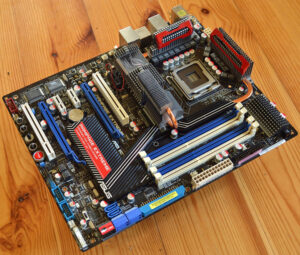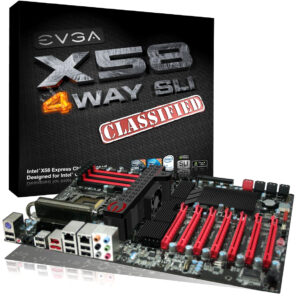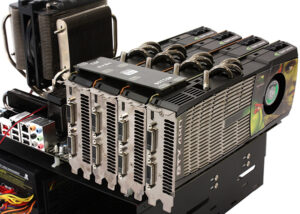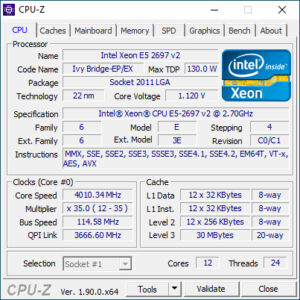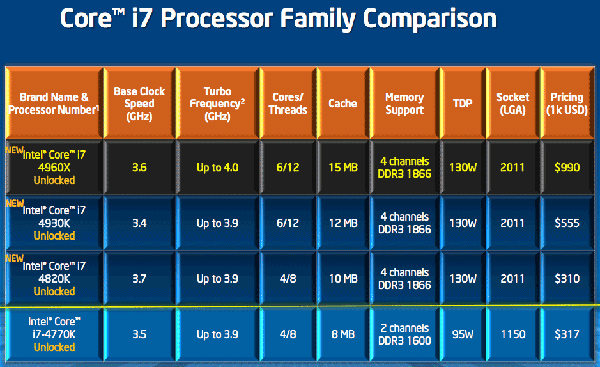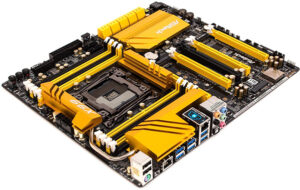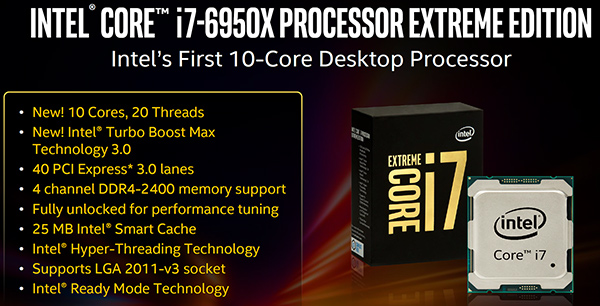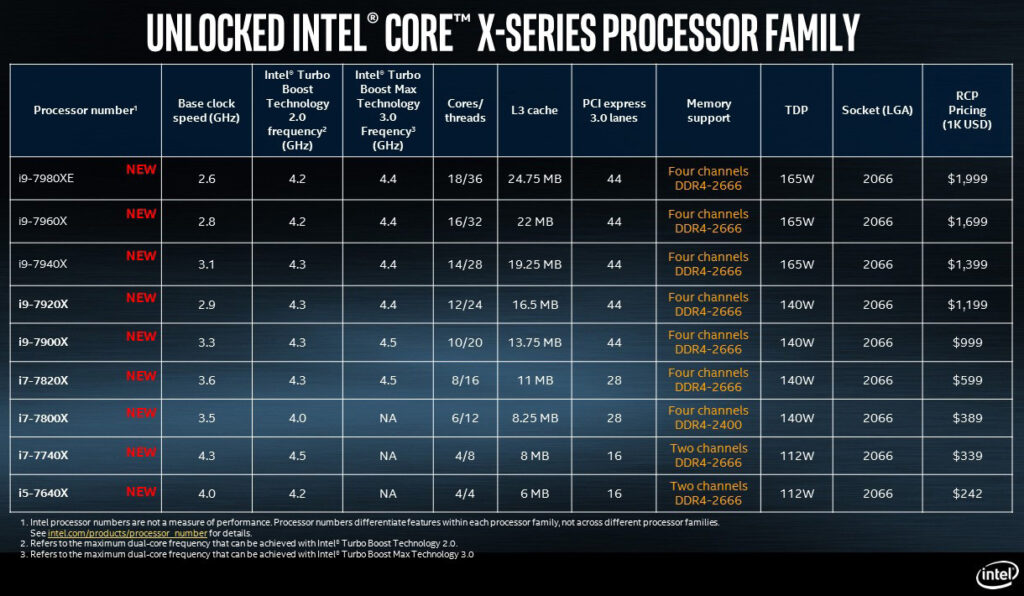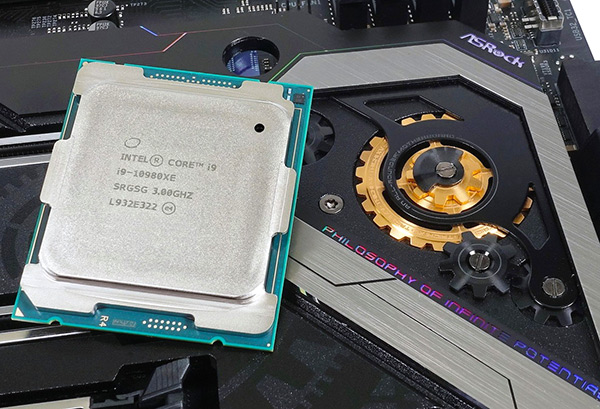The History of the HEDT x86 PC – Part 1
Introduction
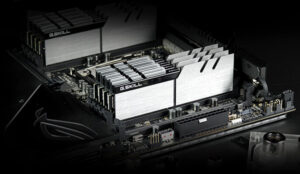 In this article, I would like to recall how the history of high-end computers or High-End Desktop PC (HEDT) began, what we now have in this segment, and what awaits us in the near future.
In this article, I would like to recall how the history of high-end computers or High-End Desktop PC (HEDT) began, what we now have in this segment, and what awaits us in the near future.
Until a certain point in time, the computer market for personal computers was not divided into subcategories. There was the concept of a personal computer, where its main criteria were: performance and cost. The higher the performance, the more expensive such a PC was. There was and still are ‘Workstation’ class PC’s but these are really more of a Business class (think CAD or Video editing) then what you would buy for your house. The problem of insufficient performance was solved for a very long time with the help of overclocking and it would seem that this order of things suited everyone.
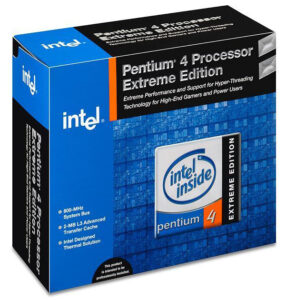 If you want a faster video card or processor, buy the Top model. Until a certain point in time, everything was like that, but at the beginning of the 2000s, processor manufacturers realized that there was a certain group of buyers who were willing to pay more. Then they were called “enthusiasts”, and now they have been renamed “gamers”. Since 2003, Intel, in unison with AMD, has been releasing their processors for wealthy enthusiasts. The first processor model from “blue” was the – Pentium 4 Extreme Edition with a clock frequency of 3.2 GHz and a very nice price of $999 (A Celeron of that era was around $100 for 2.5-2.8GHz).
If you want a faster video card or processor, buy the Top model. Until a certain point in time, everything was like that, but at the beginning of the 2000s, processor manufacturers realized that there was a certain group of buyers who were willing to pay more. Then they were called “enthusiasts”, and now they have been renamed “gamers”. Since 2003, Intel, in unison with AMD, has been releasing their processors for wealthy enthusiasts. The first processor model from “blue” was the – Pentium 4 Extreme Edition with a clock frequency of 3.2 GHz and a very nice price of $999 (A Celeron of that era was around $100 for 2.5-2.8GHz).
Thus, in this processor model, a beautiful and memorable cost, a defiant name and technological sophistication, the roots of which go deep into the server segment, are combined. The owners of the “extreme desktop processor” already considered themselves a completely different caste, and no overclocking of the older processor model could give an ordinary user the performance that an enthusiast had, and after all, extreme processors were also overclocked.
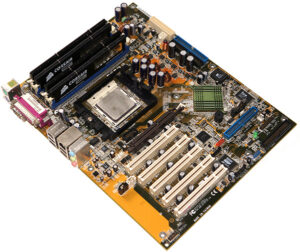 At first, AMD generally went the other way, a special separate platform was created for enthusiasts, where processors with their own separate socket were installed. Thus, the segmentation of the personal PC class took place at the physical level. We are talking about AMD Athlon 64 FX processors, and to be more precise, about the first model of this family – AMD Athlon 64 FX-51. I would call them timeless classics, still using a ceramic package, a separate socket, and special registered DDR-SRAM memory.
At first, AMD generally went the other way, a special separate platform was created for enthusiasts, where processors with their own separate socket were installed. Thus, the segmentation of the personal PC class took place at the physical level. We are talking about AMD Athlon 64 FX processors, and to be more precise, about the first model of this family – AMD Athlon 64 FX-51. I would call them timeless classics, still using a ceramic package, a separate socket, and special registered DDR-SRAM memory.
The release of these desktop processors for enthusiasts also marked the beginning of a new 64-bit era and changed the leaders of the processor industry. The yellow jersey of the leader shone on a green “background”, and Intel moved into the camp of catching up. As revenues and the image component of users and enthusiasts grew, marketers and simple engineers did not sit idly by. Performance is never enough (although it seems to me that for the last 5 years it has definitely been enough in any products of the middle-end segment) and something had to be offered to enthusiasts who were willing to pay even more. I suppose that such wealthy enthusiasts are now called creators or a close meaning of this term.
HEDT from Intel
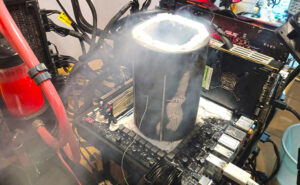 In the fall of 2008, such wealthy enthusiasts got their hands on a new platform that Intel called the High-End Desktop PC. Since that time, the history of desktop computers has been divided into two segments: simple desktop computers and high-end high-end solutions. By 2008, the lead in the technological race went to Intel, and before the advent of AMD Ryzen processors, Intel dictated and sometimes imposed its own rules of the game on the processor market for a long time.
In the fall of 2008, such wealthy enthusiasts got their hands on a new platform that Intel called the High-End Desktop PC. Since that time, the history of desktop computers has been divided into two segments: simple desktop computers and high-end high-end solutions. By 2008, the lead in the technological race went to Intel, and before the advent of AMD Ryzen processors, Intel dictated and sometimes imposed its own rules of the game on the processor market for a long time.
The new HEDT platform for gamers and enthusiasts has been based on the then new LGA1366 socket. In the same year, LGA775 remained the current socket for all other systems, which supported 4-core Intel processors of various generations and architectures, second and third generation DDR-SDRAM memory, and provided all used peripherals with 32 2nd-generation PCI-Express lanes (valid for Intel x48 chipset). The most productive processor for LGA775 was the – Intel Core 2 Extreme QX9770. It was a 4-core processor with a total L2 cache of 12 MB and a clock speed of 3.20 GHz.
By this time, Intel the Extreme Edition processor series had already acquired an unlocked multiplier. Adherents of AMD products at the same time could use the quad-core AMD Phenom X4 processors, in which the clock frequency barely reached the 2.5 GHz mark. As a result, Intel processors in all comparisons, tests and benchmarks everywhere confidently won. And the main question was: what else did the enthusiasts lack then?
And in fact, Intel had something to offer! At that time, there was a trend in the graphics market for multi-GPU solutions. Users, enthusiasts, as well as their parents, with additional financial resources, increased the performance of 3D graphics by purchasing a second, third, and even fourth video card, combining graphics accelerators in SLI and Cross-Fire configurations. Such tandems of video cards required a lot of free PCI-Express lines, even more processor power and even more high-speed RAM. And the new HEDT platform with LGA1366 socket was ready for it.
In addition to all of the above, processors for this socket had an integrated three-channel memory controller, a twice as efficient QPI bus connecting the processor and the chipset (replacing the ancient Front Side Bus), and had Turbo Boost technology, which did some work to increase performance, instead of “lazy” overclockers.
The youngest processor for the first generation HEDT platform was the 2.67 GHz Intel Core i7-920 processor model, manufactured on a 45 nm process, which had an exclusive 8 MB L2 cache and support for Hyper Threading technology. The recommended cost of this model was $284, which was much more expensive than any budget Intel Pentium or Celeron for the LGA775 socket. Accordingly, the new HEDT platform did not have any hint of any budget. And given that the cost of motherboards for the LGA1366 socket was significantly higher than that of the mainstream segment for the LGA775, not everyone could afford the new platform even in the most minimal configuration. But there were many more fans of this platform than owners of extreme versions of processors.
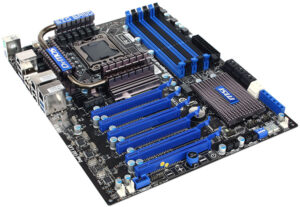 In the fall of 2009, the desktop mainstream segment moved to a new socket, which was the LGA1156. The main chipset for enthusiasts and overclockers for this socket was the Intel P55 Express, which supported Core i7 and Core i5 (and younger) processors with the Nehalem microarchitecture, as well as 32 2nd-gen PCI-Express lanes and an integrated memory controller in the processor with dual-channel support for third-gen DDR-SDRAM.
In the fall of 2009, the desktop mainstream segment moved to a new socket, which was the LGA1156. The main chipset for enthusiasts and overclockers for this socket was the Intel P55 Express, which supported Core i7 and Core i5 (and younger) processors with the Nehalem microarchitecture, as well as 32 2nd-gen PCI-Express lanes and an integrated memory controller in the processor with dual-channel support for third-gen DDR-SDRAM.
End users have not received anything supernatural from the LGA1156 platform. The number of cores has not increased, as before, no more than 4 cores were available. Processors became faster than their LGA775 counterparts, but this was the usual evolutionary path of development.
But those who decided to make their initial choice towards the new HEDT platform later never regretted their choice. Firstly, the first reincarnation of HEDT lasted much longer and the user did not have to change the board from LGA775 to LGA1156. Secondly, if you want to increase system performance, the enthusiast had more options, ranging from the number of physical slots for RAM to the number of PCI-Express slots and lanes.
In the spring of 2010, Intel made a truly royal gift for all enthusiasts by releasing the first 6-core 12-thread processor – Core i7-980X with the “Gulftown” processor core. Enthusiasts could also install server oriented 6-core Xeon processors in LGA1366 motherboards, but with a lower clock frequency and further overclock to bring the clock frequency to higher values, since overclocking on the system bus was still available. And wealthy enthusiast gamers installed three or four GeForce GTX 480s in 3-Way / QUAD-SLi mode in their HEDT systems and enjoyed high FPS at max graphics setting, which is inaccessible to ordinary users of mainstream systems, with the added benefit that in winter they did not experience any discomfort even with insufficient heating of the room with central heating.
At the very beginning of 2011, Intel released the next mainstream platform on the LGA1155 socket, which made a lot of hype thanks to processors based on the revolutionary “Sandy Bridge” microarchitecture, which featured excellent overclocking potential and performance per megahertz. But even these processors could not offer users more than 4 cores, and the first HEDT could. Therefore, owners of high-performance systems based on motherboards with LGA1366 felt more or less comfortable for some time.
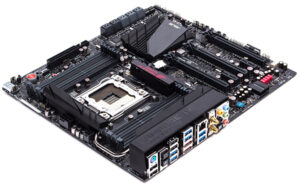
Motherboards started to look like modern engine bays – plastic covers and shrouds covering all the goodies
Progress has not stood still and to replace its first HEDT platform in November 2011, Intel presented the long-awaited second generation of its HEDT platform. Socket LGA2011 with the Intel X79 Express chipset became the heart of the new platform. This time, for the owners of the “fast ride”, Intel engineers implemented much more technological differences and innovations compared to the mainstream segment.
While the owners of mainstream platforms with Intel Sandy Bridge and Ivy Bridge processors were content with only 16 PCI-Express lines, the owners of the new HEDT platform with Sandy Bridge-E processors got 40 PCI-Express lines at their disposal. Thanks to this, all restrictions on the use of multi-GPU configurations were removed. Wealthy enthusiasts could use the following formulas to combine several video cards according to the formula: x16 + x16 + x8, or x16 + x8 + x8 + x8. And this applied not only to video cards, it was possible to install any expansion cards in a HEDT PC without fear that there would not be enough PCI-Express lines for everything.
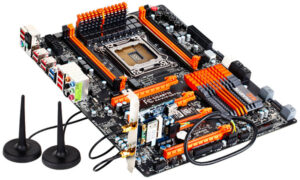 The second feature of the new platform was the presence in the processor of a built-in RAM controller with support for 4 channels. Thus, a high throughput of the entire RAM subsystem was achieved and support for its large volumes was added.
The second feature of the new platform was the presence in the processor of a built-in RAM controller with support for 4 channels. Thus, a high throughput of the entire RAM subsystem was achieved and support for its large volumes was added.
The third feature was the processors used for Socket LGA2011. The user had the choice to purchase quad-core processors or six-core models, and there were also Xeon E5 server processors, where there were even more cores, up to 12 cores, such as the Intel Xeon E5 2697 v2 processor based on the “Ivy Bridge-EP” core. HEDT processors for LGA2011 received Intel Turbo Boost 2.0 technology at their disposal, due to which the core frequency dynamically increased under a heterogeneous load, thereby increasing performance a little more.
For overclockers, the second generation of the HEDT platform was even friendlier and more convenient to use. For the mainstream platform with LGA1155 processors, only K-version processors could be overclocked, because the system bus frequency was rigidly fixed at around 100 MHz and its overclocking by 5 additional megahertz made the system completely unstable. In some cases, one could hope for 7 or less often, 10 MHz, but this was rather an exception to the rule. For the HEDT platform, Intel made it possible to change the system bus in a wider range thanks to the introduction of a multiplier system for BCLK.
So, in addition to the standard 1.0x, additional multipliers for the reference frequency of the BCLK bus fell into the hands of enthusiasts and overclockers, as well as 1.25x and 1.67x. Thanks to this, bus overclocking has become more convenient, especially for owners of Xeon server processors. But the useful features for overclockers and their HEDT systems did not end there. Enthusiasts have at their disposal the ability to change memory timings on the fly, right on the desktop of the operating system. This feature significantly saved the time spent searching for the most suitable values (a rather bittersweet change from the days of madly mashing the DEL key to enter BIOS and change each setting, benchmark, reboot, repeat).
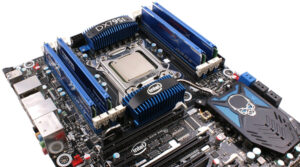 Owners of systems with LGA115x sockets were deprived of such an opportunity, for this they had to reboot and enter the BIOS every time to change the next timings. With the advent of the Haswell microarchitecture in the desktop segment, and then Haswell Refresh with the new Socket 1150, the owners of systems based on Intel Sandy Bridge and Ivy Bridge processors had to change the motherboard in order to increase performance by another 3-5%, while the number of cores remained the same and was still limited to four, and the owners of HEDT platforms continued to use the same motherboards and only thought about replacing a 6-core processor with an 8-core one or increasing the amount of RAM.
Owners of systems with LGA115x sockets were deprived of such an opportunity, for this they had to reboot and enter the BIOS every time to change the next timings. With the advent of the Haswell microarchitecture in the desktop segment, and then Haswell Refresh with the new Socket 1150, the owners of systems based on Intel Sandy Bridge and Ivy Bridge processors had to change the motherboard in order to increase performance by another 3-5%, while the number of cores remained the same and was still limited to four, and the owners of HEDT platforms continued to use the same motherboards and only thought about replacing a 6-core processor with an 8-core one or increasing the amount of RAM.
All the while, Intel continued to dominate the CPU market. Before the release of the new Skylake microarchitecture, with the new DDR4-SDRAM standard, exactly one year remained in the desktop segment. But Intel did not postpone all advanced developments and in the fall of 2014 introduced the third generation of its HEDT platform. The same Socket LGA2011 was taken as a basis, but v3 versions and a new chipset – Intel X99 Express. The third generation of the HEDT platform brought with it a new DDR4-SDRAM memory standard, as well as 40 Gen 3 PCI-Express lanes.
The youngest processor for this platform was the Intel Core i7-5820K, which had six cores with Haswell microarchitecture and cost $396 in BOX version. The top four-core Intel Core i7-4790K, for LGA 1150, related to the Haswell Refresh microarchitecture, cost $350 in a similar design. But the cost of motherboards based on the Intel X99 Express chipset and a set of DDR4-SDRAM made the total cost of owning the platform affordable by no means for everyone, although the HEDT platform was never positioned for this.
The updated platform supported Intel Core i7 processors with Intel Haswell-E and Intel Broadwell-E processor cores. The range of the number of cores has expanded to 10. The top third-generation HEDT processor was the Intel Core i7-6950X, which had 10 cores with Broadwell microarchitecture and a nominal clock speed of 3.0 GHz and 25 MB of Extreme Edition L3 cache. Against the background of all 4-core desktop products, this monster stood out to everyone, including its cost. It should be noted that Intel, taking advantage of its dominant position and the absence of any competition in the market, has long crossed the $999 mark for its special processors, and the Intel Core i7-6950X was no exception.
Its recommended price started at $1723, which put it out of reach even for the average enthusiast. At the time of the sale of this processor, and this is May 2016, the fastest processor for gamers and enthusiasts of AMD’s main competitor was the eight-core old man AMD FX-9590 for Socket AM3 + and the quad-core AMD A10-7890K, which belonged to the Steamroller microarchitecture for Socket FM2+. But they were not suitable even for competitors of the HEDT platform of the previous generation. Before the advent of the first generation of Ryzen, there was still a whole year left.
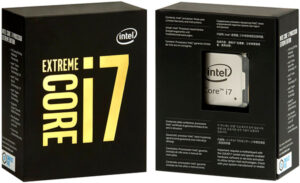 Let’s go back to the third generation of HEDT from Intel. In addition to Intel Core i7 in Socket LGA2011 v3, over time, or immediately, depending on the budget, it was possible to install Xeon E5 v4 server processors with up to 22 cores. It was possible, as an option, to stop at 12, 14 or 16, everything was decided by the final cost, but over time, when changing generations of platforms, the cost of such processors became affordable for enthusiasts. In the desktop segment, only with the advent of the 8th generation of Core processors with the Coffee Lake microarchitecture, it became possible for 6-core processors to appear. And this happened at the end of 2017, after the release of the first generation Ryzen processors and the start of sales of the first generation of AMD HEDT processors – Ryzen Threadripper.
Let’s go back to the third generation of HEDT from Intel. In addition to Intel Core i7 in Socket LGA2011 v3, over time, or immediately, depending on the budget, it was possible to install Xeon E5 v4 server processors with up to 22 cores. It was possible, as an option, to stop at 12, 14 or 16, everything was decided by the final cost, but over time, when changing generations of platforms, the cost of such processors became affordable for enthusiasts. In the desktop segment, only with the advent of the 8th generation of Core processors with the Coffee Lake microarchitecture, it became possible for 6-core processors to appear. And this happened at the end of 2017, after the release of the first generation Ryzen processors and the start of sales of the first generation of AMD HEDT processors – Ryzen Threadripper.
The power of the third generation of the HEDT platform from Intel was colossal, the scalability was great, for the first time not technological limitations, but the cost of owning the HEDT platform itself became a deterrent, but those who invested in it at the beginning survived more than one generational change of LGA115x sockets in the desktop segment, where Intel released a new chipset almost every year.
2017 (5 years ago!) was a turning point for both Intel and the entire processor market, including the HEDT segment. In June, Intel introduced the next and currently the last – the fourth generation of its HEDT platform. The processors moved to the Skylake microarchitecture, the socket changed to LGA2066, the frequencies of the four-channel DDR4-SDRAM memory grew noticeably and reached 4 GHz. The maximum number of cores reached 18, for which they already demanded $1999 for the extreme model of the Intel Core i9-7980XE processor.
There is one more good news and one bad. Intel decided to bring the HEDT platform closer to enthusiasts and decided to release two models of processors with a small number of cores so that entry into the elite club would be cheaper. These processors are models belonging to the Kaby Lake-X family: four-core and four-thread Core i5-7640X and four-core and eight-thread Core i7-7740X. The cost of the latter was $339. For this money, you could buy the flagship of the desktop platform – Core i7-7700K! That’s how much the HEDT platform broke away from the desktop. The bad news was that there was thermal paste under the cover of the 7-series Skylake-X processors and that was the price! But even the expensive Intel Core i9-7980XE was regularly bought and scalped, and the most successful specimens with custom water AIO’s were able to operate at frequencies close to 5 GHz.
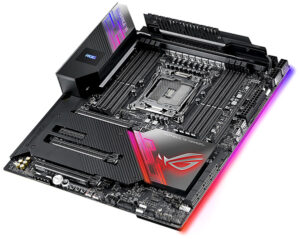 The new platform allowed the installation of 18-core processors and support for 128 or 256 GB of RAM (depending on the processor used). 44 Gen 3 PCI-Express lanes provided scalability for any kind of task. A four-channel RAM controller is capable of demonstrating data exchange rates of 100 GB per second, and if you try, you can reach figures of the order of 115-120 Gb/s, which is even higher than the level of the most modern Desktop solutions with DDR5-SDRAM memory. Overclocking of the available processors was possible through a free multiplier and was not fraught with any difficulties, with the right choice of a motherboard with a good VRM.
The new platform allowed the installation of 18-core processors and support for 128 or 256 GB of RAM (depending on the processor used). 44 Gen 3 PCI-Express lanes provided scalability for any kind of task. A four-channel RAM controller is capable of demonstrating data exchange rates of 100 GB per second, and if you try, you can reach figures of the order of 115-120 Gb/s, which is even higher than the level of the most modern Desktop solutions with DDR5-SDRAM memory. Overclocking of the available processors was possible through a free multiplier and was not fraught with any difficulties, with the right choice of a motherboard with a good VRM.
The final result rested on the cooling system, however, for desktop solutions, after the number of cores crossed the 8-core mark, this melting also became relevant.
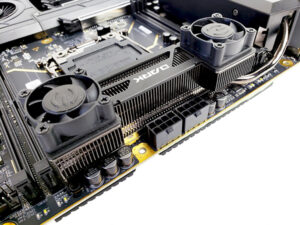 During the life of the fourth generation of the HEDT platform, the Socket LGA2066 was replaced by three generations of processors, but the maximum number of cores remained unchanged – 18. But the possibility of using Intel Xeon server processors for enthusiasts was removed.
During the life of the fourth generation of the HEDT platform, the Socket LGA2066 was replaced by three generations of processors, but the maximum number of cores remained unchanged – 18. But the possibility of using Intel Xeon server processors for enthusiasts was removed.
A year later, in the fall of 2018, Intel began to feel heavy pressure from AMD, and for the updated line of Skylake-X processors of the 9th series, they returned solder under the cover and slightly refreshed the characteristics in the direction of increasing performance. And a year later, Skylake-X processors were replaced by Cascade Lake-X, the cores of which contained cosmetic changes and had practically no effect on performance, except for slightly improved overclocking potential. But at that time, Intel had already lost the race in the HEDT segment, the second generation of HEDT processors from AMD utterly defeated the former power and greatness of the flagships of its HEDT platform. And Intel for the first time in history has reduced the cost of its processors by 2 times. The recommended cost of the 18-core extreme flagship Core i9-10980XE was already the recommended $979.
In my opinion, the fourth generation of HEDT from Intel turned out to be very successful in the process board. The question of the cost of ownership of the platform is omitted, HEDT has never been a budget solution. Having bought a good motherboard with LGA2066 back in 2017, at this point in time, its owner can comfortably study, play and work. Its power is still enough with a margin, and it continues to be relevant to this day.
Part 2: AMD’s debut in the HEDT market
Guest Article by: Max1024
Edited by: CPU Shack


